Yanqingmen (燕青门) is also known as Yanqingquan (燕青拳), Mizongquan (秘踪拳), Mizongyi (迷踪艺), and Yanqingjia (燕青架). In general in its hometown in Hebei Cangxian (Cangzhou) county it is called Yanqing Quan whilst outside of Cang County it is known as Mizong Quan. The larger system is referred to as Yanqing Men, which encompasses other conventions including Yanqing Jia, Mizongquan, Yanqingquan and Mizongyi (which are also specific methods within Yanqing Men).
Yanqingquan (/Mizongquan), is one of the most famous martial arts of Hebei province. Practiced widely from Cangzhou to Tianjin, it is a very complete and effective martial system with a large variety of techniques and methods. Many legends from Yanqing and Linchong of Shuihuzhuan (Heroes of the Water Margin) novel until the twentieth century with the famous Huo Yuanjia, the style has been propagated and practiced by many.
Yanqingquan (Mizongquan) is agile and has techniques that can be changed with ease allowing for its deceptive approach. The body dynamics with rises and falls are evident, and the execution is quick and precise. The waist is vital for support and power generation, with a balance of soft and forceful movements. Both hands and feet are employed equally, yet the legs are allowed enough space to function well. Although few have persevered since the style’s methodology and basic practices are frequently tough, requiring enormous amounts of strength and coordination, it is both beautiful and clever at the same time, with effectiveness and combat-oriented deception. Dodge, evade, lean, pivot, and light are some of the fundamental body movements that define Yanqingquan.
Folklore and Legends
The origins of Yanqingquan (燕青拳) are both ancient and mysterious. Dating back to the Sui or Tang dynasty. It is also known as Mizuquan, Mizongquan (迷踪拳, 秘踪拳拳), Mizongyi (迷踪艺) or Yanqingjiazi. It is popular throughout China but is mostly practised throughout the Cang County regions of Hebei Province in Northern China. The exact origins are unknown and legends differ amongst practitioners. Some suggest that it was related to ancient Shaolin Master Jin Naluo, others suggest that Yan Qing and Cheng Zijing had mastered the arts of the Sui period and developed separate arts, Yan Qing called it Yanqingquan and Cheng Zijing called it Mizongquan.
In line with Chuojiao Men and Liuhe Men, it is sometimes also said that disciples of Master Zhou Tong in the Song dynasty taught the art. In Folklore, Zhou Tong’s disciples included Lin Chong, Lu Junyi (Yanqing ), Wu Song (Chuojiao) and Yue Fei (Liuhe). Further, the legend states that in the Song dynasty Lu Junyi from Daming county in Hebei province was a great master of martial arts and imparted his skills to a servant named Yan Qing, his sole disciple. After teaching others his students called it Yanqing Quan in his honor, but since they were rebels (Heroes of the Water Margin story) they had called it Secret Boxing (Mizong Quan), further since when escaping there footwork left pursuers lost in their tracks, it was also referred to as Secret Skills (Mizong Yi).
History & heritage of Yanqing Quan (Mizong Quan)
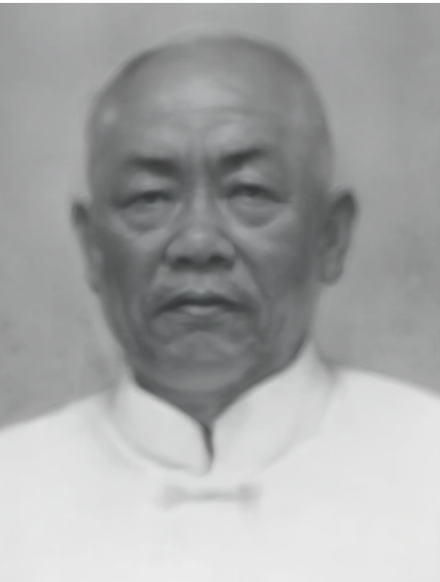
Sun Tong (孙通, 1772-1882)
The development and propagation of Yanqing quan however, can be attributed to Sun Tong (孙通, 1772-1882) who was born in Taian county, Shandong Province. He had loved wushu since very young and studied from various masters. He became a disciple of great master Zhang in Yanzhou county, Shandong province. He studied for over 10 years and progressed so quickly that he was nicknamed “Sun the Iron Leg” as excelled in the kicking methods and legwork. His teacher advised that he seek out masters from around North China and improved his skills tremendously. (some records suggest Shaolin Temple (e.g Songshan or Panshan Faxing Temple/Northern Shaolin Temple). However, as it was associated witht he various rebellions and had subsequently been destroyed, by Yongzheng emperor and later in the Jiaqing periods of the Qing dynasty. There is also records suggesting that Sun Tong’s teacher M Zhang was Zhang Bailu, a member of the Bagua/Wanglun Sect. Wang Lun learnt martial arts from Zhang Jicheng, that had inherited martial arts and traditional medicine from Yuan Gongpu. Wang Lun used to be an official in Yanggu county, well loved for teaching martial arts, qigong and offering free medical treatments. Wang Lun in 1774, led an uprising that captured three small cities and laid siege to the larger city of Linqing, a strategic location on the north-south Grand Canal transportation route.
Sun Tong is thought to have mastered over 30 different martial arts from across the Northern Central plains, as a result he was respected as “Wan Neng Shou” basically meaning that he was capable with any skill or style of martial art. He returned after his travels to Master Zhang’s home only to discover he had passed away. After expressing his learnings to Zhang Yulan, who wanted to challenge him, and by accident killed her. Deeply depresed by the event he left Shandong and ended up at Yaoguantun village, Cang County, Hebei Province. It is here that he passed on his skills to students, and from then forward the style of Yanqingquan laid its foundational mark on the martial world. During his later years Sun Tong also taught in other places where he often focused on only key skills so that the naming conventions changed based on the respective set of emphasis, so there were Yanqing Jia, Mizong Quan and Mizongyi as examples that are essentially parts of Yanqing Men that became styles onto themselves.
In Cang County Sun Tong’s skills were passed on to his two sons and by his key disciples (thereafter branches) :
- Cangzhou Sunzhuangzi – Chen Shan
- Cangzhou Keniuzhuang – Yu Shi
- Cangzhou Lilongtunmiao – Zhi Yuan
- Cangzhou Dongguang County Anletunzhuang – Huo Xuwu
- Taiping Sujiayuan village – Zhou Changsheng, Lu Tongchui
- Jinghai Yangchengzhuang Village – Tian Yongchun, Wen Lin
Sun Tong’s most senior disciple was Chen Shan, whom together with his sons would become the main inheritors of Yanqing Men. The Cang County Yanqing Men system of Chen Shan became the most popular in all of Hebei province. He taught many great masters and his disciples were famous for their excellent skills. Keeping to the original teachings this school contains the most content and training methods. This school has been propagated all over China including Dongbei (Heilongjiang and Liaoning province), Sichuan and Shandong.
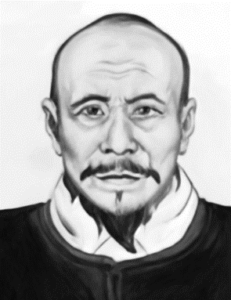
2. Chen Shan (陈善), also known as Chen Wanshan (陈万善) from Sun Zhuang Village, in Cangzhou was by far the most famous of Sun Tong’s disciples. Chen Shan had loved martial arts since a young age and was diligent hard working child. In his youth he liked climbing and acrobatics, whilst also being known as a strong young man in the village. When he heard Master Sun Tong was passing by the village and accepting students, he was eager to seek his guidance. Unfortunately coming from a peasant family, he could only practice with Master Sun when it was not harvest season, as he had to help the family with the crops.
Sometimes though such difficulties build the best character, and after a few years, Master Sun noticed the dedication and responsibility of young Chen Shan so imparted all his knowledge over many years to Chen Shan, who was extremely capable with the Qin-na, Dian Xue (Cavity Point Striking) and Bone misplacement skills. After Sun Tong passed away, it was Chen Shan who had the most followers and passed on the great skills of Yanqingquan to the next generation. His key disciples included his son Chen Guangzhi (陈广智), Zhao Mingmao (赵明茂), Zhou Changchun, Li Shi (李实), Lu Zhanao (吕占鳌), Wang Jiwu (王继武), Sun Sijing (孙思敬), Yang Hongbao (杨鸿宝), Yu Changsheng (于长生), Yu Tongbo (于同波) and Yu Wu (于五).
2. Zhou Changsheng (周长生) after studying with Sun Tong, taught Mizongquan around the areas of Huanghua City such as Luqiao, Heqiao, Zhangfu Zhuang, and Qing County Ouxin Zhuang and Sujiayuan. His most notable disciples however were his sons Zhou Zongde and Zhou Zongi, whom maintained the style in the Zhou family for generations.
2. Huo Xuwu (霍旭武) was from Dongguang county in Cangzhou and one of the disciples of Sun Tong. Huo Xuwu developed his own version of Lianshou Quan (in the past Lian Shou were sequenced lines of continuous techniques) and of Mizong Yi. These were taught to taught Huo Endi (霍恩第)
3. Chen Guangzhi (陈广智/陈光治) was from a wealthy family and dedicated much of his time to business. He was renowned for his Bagua Qimen Spear. He later became a Biaoshi (Security Bureau Officer) and during the time had worked with Guo Yunshen becoming friends so Chen Guangzhi absorbed Xingyiquan as well. Chen Guangzhi did not have any sons and passed the skills to his nephew Chen Yushan (陈玉山), the main inheritor, as well as students Liu Junling (刘俊岭) and Jiang Detai (姜德泰) who later continued studying with Chen Yushan, Yang Kunshan (杨昆山) and many others.
3. Zhao Mingmao (赵明茂 1846~1923 ) Manchurian, studied with Chen Shan since a young age. He was naturally gifted and gained amazing skills, obtaining his teacher’s great praise. His Qin-na (grappling) skills were superb and his kicks had attained the essence of Yanqingquan’s hooking skills, where one kick becomes multiple, one movement has multiple dis balancing skills. His kicks were respected as having no way to defeat because once touched, the direction of the whole kick and body will naturally re position itself into areas that opponents could never interpret and then suddenly be struck.
3. Su Mingyuan (苏明远, 1875-1935) was originally from Sujiayuan. Originally known as Su Diankui (苏殿魁), he had been born into a well known martial family. His grandfather was a disciple of Sun Tong and his father an expert as well. He studied with them since a young age, receiving a thorough and comprehensive Mizongquan system in detail. He became a Biaoju (Security Logistics Escort) and participated in the Yihetuan (Boxer Rebellion). Zhang Zhaozhu, a famous bodyguard in Hebei, and Su Mingyuan were brothers from the same school of Mizonquan and were also bodyguards.
After the Boxer Rebellion failed to defend Tianjin, he fled to Dongying, Shandong, changed his name to “Su Mingyuan”, and continued to work as a bodyguard. Zhang Zhaozhu returned to his hometown after hiding for several years, and then worked as a bodyguard to the Guandong region. The two met while they were on the way to escort and stayed overnight at an inn in Ye County, Shandong. Later, Zhang Zhaozhu escorted to Longkou and then ventured to Dalian. Su Mingyuan escorted to Yantai, established himself, and opened the “Secret Sect Boxing Club” in Yantai to teach disciples for a living. Su Mingyuan setup a “Mizong Boxing Society” in Yantai, some of his key disciples included Sun Yuesheng, brothers Li Shushan, Li Shufeng, Li Shusheng as well as Zhou Deyu and Zhou Degao.
3. Zhang Zhaozhu (张兆珠, 1877-1945) was from Chengguan Village (today known as Qingzhou Vilklage), Qing County, Cangzhou. He was the first Yanqingquan Master to come to Dalian in 1904, after him many others followed. Zhang Zhaozhu was born into on of the villages that is home to Mizongquan/Yanqingquan, so from childhood studied the martial arts, his martial brother during training included Su Mingyuan. Zhang become very skilled, so much so that by the age of 18 he already was capable of working as a Biaoju (Security Logistics Escort). In 1900, he also joined in the Yihe Tuan (Boxer Rebellion) and fought in the Tianjin confrontations, as well is other areas returning home in 1903. After the Japanese bombings in the summer of 1904 he went to Dalian and at first did not consider teaching but in order to teach his son, set up a small class which in time gradually grew. His disciples include his sons, Zhang Hongshuang and Zhang Hongquan as well as Gao Yu, Wang Wenyong, Liu Maosheng, Zhou Jinsheng, Qu Guangjin, Qu Guangyin, Wu Kui, . As Zhang always remained a patriach many of his students fought in the various resistance against Japanese occupation.
3. Huo Endi was born in Dongguang County, Cangzhou where he studied with his father. He later moved his family to Jinghai, where his method became known as Huo family Boxing, or Mizong Quan. He taught his sons Huo Yuanliao (霍元卿), Huo Yuandong (霍元栋) and Huo Yuanjia (霍元甲) and students including Liu Baoxiang (刘宝祥) and Zhang Jintang (張金堂)
3. Zhou Zongde 周崇德 studied with father Zhou Changsheng, and passed the skills within the family.
4. Yang Kunshan (杨昆山, 1881-1960) was nicknamed as ‘fast hands Yang’ and was one of the outstanding disciples of Yu Changsheng and Chen Guangzhi. Yang Kunshan also learnt the Qingping Sword from Liu Wenshi (刘文石, disciple (cousin) of famed Qingping Sword Master Jia Yunpeng). Yang Kunshan taught Yanqingquan to many including the most talented Liu Zhenshan ((刘振山, 1907-1982) also known as ‘double broadsword Yang’, Yang Liansheng (杨连生), Lu Zhenduo (卢振铎), Guo Yufen (郭玉芬), Guo Jianwei (郭建伟), Guo Jingchun (郭景春), Liu Enhua (刘恩华), Liu Yanzhao (刘延照).
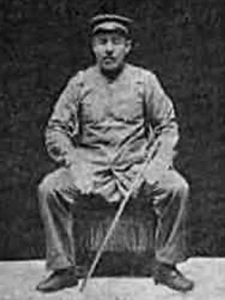
4. Chen Yushan (陈玉山 1858~1943) born in Cang county, the grandson of Chen Shan and nephew of Chen Guangzhi, a family of experts. Chen Yushan was one of the most prominent Yanqing Quan masters of his generation, had the largest number of followers, and was responsible for the wide spread of Yanqingquan across Cang county.
Chen Yushan’s skills were renowned, and many military and warlords sought his skills for training their officers. Cao Kun’s military academy sought him out as a coach in 1918 and awarded a medal to Chen Yushan, He was righteous and upright, skilled in all aspects of Yanqing Men, hand to hand combat, grappling, throwing and weaponry.
Chen Yushan taught his sons Chen Fengkui, Chen Fengqi, Chen Fengyi (陳風儀), as well as grandson Chen Youliang, key disciples Sun Baye, Lu Jinsheng, Huang Qiwen, Zhao Tongen, Zhao Jinglan, Zhou Yuxiang, Li Yuanzhi, Li Yuan Qi, Jiang Detai, Jiang Rongqiao and many others.
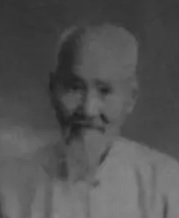
4. Guo Zhongsan (郭仲三,1886-1973) originally his family originated from Fujian, but they migrated to Hebei where he was born in Ximenli, Cangzhou, Hebei. In the are many practiced martial arts, so Guo followed the locals in their training since he was a child. Because he was smart, studious and willing to endure hardships, his martial arts skills improved a lot. He later made a living by selling shoes on the street. While Guo was running around carrying a load, he met a martial arts master, Chen Guangzhi, the master of Yanqing Quan.
The master’s training method was very special. He tied a copper coin to his pigtail (he still had pigtails in the late Qing Dynasty and the early Republic of China) with a thin red rope and dragged it on the ground. He required his body to remain horizontal, and the copper coin could never leave the ground no matter how he dodged or jumped. With such hard training and the master’s careful guidance, Guo’s kung fu made great progress and he also stood out among his martial arts peers around him. During the Anti-Japanese War, Guo’s hometown became an enemy-occupied area. Once, when Guo was carrying a load to buy shoes at the market, he saw seven or eight Japanese soldiers buying things without paying and bullying a Chinese. He was so angry that he stepped forward to defend the injustice, which caused a conflict. The Japanese soldiers were injured but not without recourse later. Guo knowing this, moved to from his village further south in nearby Binzhou, Shandong province and set up a store there. He also taught Yanqingquan to local enthusiasts.
4. Liu Junling (1881-1956) was of Manchurian descent and resided near the Northern gates of Cangzhou. Liu practiced Yanqingquan with M Chen Guangzhi from a young age, emphasizing the development of his iron palms, fists and iron arms. He continued studies with his martial brother Chen Yushan thereafter. In terms of weapons he became highly skilled with the three sectional staff. There is a story about one of his feats where there used to be a bridge in Cangzhou known as the lost souls bridge (because it was an execution ground underneath). Since it was a rainy, wet and muddy surface two cars on the bridge were stuck after a collision. With limited equipment, Liu offered his arm supporting iron plate for the car to drive over. As a result he became known as the iron arm Liu by the local community. In 1929 he travelled to Shanghai for the Jin De society, at the same time he helped Jiang Rongqiao to complete his book on Kun Wu Sword. Thereafter he moved to Tianjin for a while where he taught students. M Liu passed the Yanqingquan system to his disciples including Zhao Shoushan, Chen Wanling, Tian Jingfu and Liu Zengren.

4. Zhang Hongshuang (张洪双, 1898-1979) was the eldest son of Zhang Zhaozhu and helped popularize Mizongquan in Dalian. Hongshuang spent most of his life working at the Dalian Shipyard factory and during the Japanese occupation he ganged with friends to destroy a Japanese military ship, later forced into custody and severly beaten but lucklily survived and continued his service into the new China aiding to build ships for the progress of his nation. He used to practice in the late nights at the Xigang Temple courtyard. His students include Zhang Baoting, Zhang Baofa, Zhang Baocai, Zhang Baogui, Zhang Baofu and Zhang Baolong.
4. Gao Yuchun (高玉春, 1885-1967) was originally from Gaojia Kouzi town in Cang County, Cangzhou. He was responsible for setting up the Mizong Quan Society. Students included Liu Boyang, Xue Yiheng, Gao Shuanggui, Zhang Xiushan and Liu Keping.
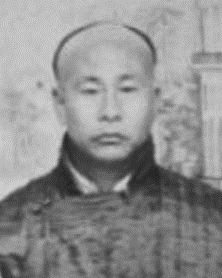
4. Huo Yuanjia (霍元甲, 1868-1910) was the 4th son of Huo Endi (of 10 Children), born in Jinghai County. Although descendant from a martial family, Huo Yuanjia unfortunately due to his weak complexture (he had asmtha and Jaundice) was not encouraged to study Yanqing Quan by his father. Rather Huo Yuanjia was supposed to focus on academic study. However, due to his interest he observed the teachings of his father and started to practice the family”s Huo Family Mizongquan. Huo Yuanjia is thought to have had four key students Liu Zhensheng (劉振聲) Chen Qimei (陳其美) Chen Gongzhe (陳公哲) Chen Tiesheng (陳鐵生). After going to Shanghai was associated with the committee (inclusive of his students Chen Gongzhe, Chen Tiesheng whom were members of Sun Zhongshan’s Tongmen Association) that founded/commenced the Tongmen Association supported Martial arts school in Shanghai (known as 精武體操會 Jingwu Gymnastics Association) which had Sun Zhongshan as the Honorary President, Nong Jingsun as President and Huo Yuanjia was a director in the Combat Department (Head coach of the Martial arts Studies). The first batch had 73 students enrolled. After only 70 days of the opening of the Jingwu Gymnastics Association, Huo Yuanjia did not have time to establish the Martial arts courses, and then passed away at only 42 years old. Therefore there are no inheritors of Huo Yuanjia’s martial arts in the Jingwu Association. After he passed away students studied other Jingwu curriculums (mainly through Zhao Lianhe) and some had tried to re-create aspects of the lost Mizong Quan.
4. Sun Yuesheng (孙曰胜) was from Mouping County, Shandong Province. He was disciple of Su Mingyuan (苏明远). During the spring of 1932 he travelled from Yantai to Dalian where he established the Mizong Quan Society. He got ill in 1943 and then decided to return to his old home in Shandong. His most notable students in Dalian included Zhao Fengting, Li Shushan and Guo Lianglao (郭良劳, 1915-1989). Yantai students included Sun Shaoting (孙绍亭,1888-1953) who taught in Fushan County, Yantai, Shandong.
4. Li Shufeng (李树峰) was one of the three Li brothers whom studied with Su Mingyuan since around 1928. They studied with Mr. Sun Yuesheng, who had started a business in Dalian for many years, and then worked in Dalian, Gaizhou, Yingkou, Anshan, Shenyang, Fengcheng, and Dandong respectively. He taught Mizongquan in other places. After that, they returned to Brother Sun’s boxing studio in Dalian to reunite, discuss, exchange, gather and sublimate their respective physical practices, aiming to further promote the continuous enrichment, perfection and inheritance of Mizongquan. Continuously expand and carry forward; truly laid the foundation for the formation of the Dongbei division of the School. Li Shusheng had a wide influence due to his vitality, profundity and ruthlessness.
When he was still in Shandong, Li Shufeng, who was in his prime, became lifelong friends with the famous Baguazhang master Gong Baotian and the young Seven Star Mantis Boxing M Wang Chuanyi who lived in the same place. The three of them often communicated when they met. From the moment they started, they began to engage in impromptu discussions and learn from each other’s strengths on the basis that “no deal can be made without fighting”. At that time, there was a saying that “the secret sect, the mantis sect, and the eight trigrams are not divided into different sects.”
Li taught Mizongquan in Dalian for more than 20 years and has taught many outstanding disciples. His distinguished disciples include: Yuan Qingchun, Lin Zhensheng, Lin Zesheng, Yu Dexian, Lin Zerui, Zhang Huicun, Li Zhuhe, Yu Hongfan, Yang Huaqing, Du Jiande, Lin Ziyuan, Yao Zhongcai,
4. Zhou Shiming 周世明 (Zhou Yi) and Zhou Shitai 周世泰(Zhou Tai) were outstanding inheritors of the Zhou family Mizong Quan.
4. Liu Baoxiang (刘宝祥) and Zhang Jintang (張金堂) whom were very talented students of Huo Endi and mastered Mizong Quan. They later resided in Qing county, Hebei Province, working as Bao Biao (Personal Bodyguards) and also taught to the locals in Qing County.
5. Chen Fengkui (陈凤魁, 1888-1960) was the eldest of M Chen Yushan. Feng Kui became renowned for his combat skills, iron palm and fierceness. Born into a family of experts that trained together from childhood, he achieve great skills. Many had employed him as trainer and also as a protection/security officer for some of the officials and warlords during the time. Whilst serving duties in Dongbei around year 1929, he encountered a group of Japanese army officers (this was just a few years prior to the Japanese invasion with the Manchuko protocol and the puppet Manchurian state) abusing locals violently. GM Chen could not handle the abuse to his fellow men, so although the officers had rifles, he picked up a wooden pole from nearby, ended up beating them up and murdering one of the army officers. As a result, he ran away and hid away from society for some time. GM Chen Fengkui taught in villages around Cangzhou and Tianjin, he also served different roles in training resistance army regiments.
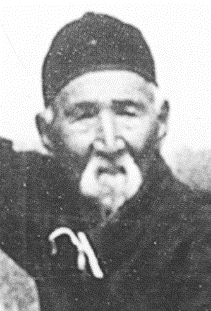
5. Chen Fengqi (陈凤岐, 1905-1998) was one of the younger sons of Chen Yushan, renowned for his nimble and quick movements. Chen Fengqi was born into a family with a deep Yanqing quan tradition and he diligently achieved skills expected of him from that. At the age of 13 he had already gained great abilities, and his father would take him to meet other martial uncles and masters to develop even further (including Cao Kun’s military academy where his father was hired as coach). During those teen years he already took on many challengers (often physically larger) and won the praise of his teachers for his speed and clear techniques being nicknamed Xiao Baiyuan (Little white ape).
In 1931, he easily passed the exams of the Zhongyang National Martial Arts Institute in Nanjing, also later involved in training the army and after being dis-illusioned by the KMT at the time for focusing on internal issues rather than protection against foreign invasions (like Japanese), in consultation with his father he returned to Cangzhou to help with farming and promote martial arts amongst his local community.A martial prodigy he received instructions from many experts such as Tong Zhongyi (Liuhequan), Liu Yuchun (Tongbeiquan), Fu Wanxiang (8 Immortals Boxing) and Li Shunan (Bajiquan/Piguaquan). He enhanced his skills in Shuaijiao (Wrestling/takedowns), Zuibaxian (Drunken 8 Immortals Boxing), Miao Dao (Willow Leaf Saber), Piguaquan and more. In this manner, he did much effort to not only preserve Yanqingquan but supplement it with great methods from other systems.
He became well known and had over a hundred followers from around the country. Unfortunately during the cultural revolution he disappeared avoiding any issues associated with his past with the KMT. After though, when the National research council in 1980’s sought representatives of traditional Yanqing quan, Chen Fengqi was selected to represent, he also became the vice president of the Cangzhou martial arts association, and obtained many awards in his lifetime culminating in a national award for contributions to martial arts in 1988. Master Chen taught many disciples and was instrumental in the preservation and development of the Chen family Yanqingquan which is one of the most wide spread in Northern China today.
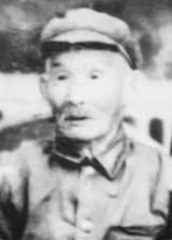
5. Sun Yuming (孙玉铭 1894–1982) was a native of Tongjiahuayuan Village, south of Cangzhou City (now part of the Huayuan Community, Nanhu Subdistrict, Yunhe District). From a young age, he studied martial arts under Chen Yushan. Despite his small and slender frame, Sun trained diligently, mastering solid stance techniques and swift movements, earning the nickname “Iron Frame. 铁架子 ” In 1918, Cao Kun, the Zhili Military Governor, established a martial arts battalion in Baoding, and Sun joined upon recruitment. While serving in the military, he not only practiced his primary martial arts skills but also learned the double hooks and ape-back staff techniques from Ye Junshan, a native of Lang’erkou Village in Cang County. In 1921, when Cao Kun’s troops entered Tianjin, the martial arts battalion was stationed at the Zhili Government Office. After Cao Kun’s defeat in the Zhili-Fengtian War, the battalion disbanded. Sun remained briefly in Tianjin, working at Huangjia Garden as a gardener and martial arts instructor before returning to his hometown to farm.
In 1928, Sun applied for and was admitted to the first class of the Nanjing Central Martial Arts Academy. After completing his studies in six months, he was appointed as a coach. Known for his mastery of the Xingzhe Staff (Walker’s Staff), he earned the nickname “Monkey Sun. 孙猴子 ” He collaborated with fellow coach Guo Changsheng (nicknamed “Guo Swallow”) to film demonstrations of techniques such as double hooks versus spear and single saber versus spear, creating documentary footage that gained recognition. Following the July 7th Incident in 1937, the Central Martial Arts Academy relocated multiple times due to the war. As the academy’s director of education, Sun moved with it to Changsha, Guilin, Nanning, Chengdu, and Chongqing. After the war, Sun broke down traditional barriers between martial arts schools and dedicated himself to promoting martial arts. He adapted the academy’s teaching methods, incorporating foundational exercises based on a new three-stage martial arts curriculum and group performances of saber and sword routines, such as Man Jiang Hong and March of the Big Saber, to inspire national pride. In 1945, Sun returned to his hometown to farm and teach martial arts. In 1951, Sun was invited by Ma Wenkui, a former academy student and director of the Hebei Provincial Sports Commission, to serve as an arbiter for the first Hebei Provincial Martial Arts Competition in Baoding. At the conclusion of the event, Sun performed the Ape-Back Staff at the audience’s strong request, earning prolonged applause. In 1957, Sun represented Hebei Province as a special guest in the National Martial Arts Competition held in Tianjin, where his Ape-Back Staff routine won first place.
During the Cultural Revolution in 1966, martial arts were banned, and Sun, along with others, faced persecution. His equipment was confiscated, and many martial arts traditions were lost. Despite these challenges, Sun sought to preserve traditional martial arts. In 1972, he boldly wrote to leaders of the State Sports Commission, expressing his views on Chinese martial arts and proposing ways to inherit, promote, and develop these traditions. His actions demonstrated the selflessness and courage of a veteran martial artist. On March 14, 1982, Sun Yuming passed away suddenly from acute myocardial infarction at the age of 88.
5. Sun Ba Ye. Other than Chen Yushan’s sons, Sun Baye was Chen Yushan’s most recognized disciple. Sun Ba Ye was from the Nangutun Village of Cang County (Nangutun belongs to Fenghua Township in Sunzhuangzi Village). Sun Ba, the eighth son of his family, was Chen Yushan’s disciple. He mastered both unarmed combat and weapons training, inheriting the secret techniques of Chen Yushan’s grappling skills. His reputation soared, and martial arts communities from far and wide competed to invite him as an instructor. Sun was also proud of his skills, and thus, in the southeastern region of Cangzhou, there was no one who didn’t know of Master Sun Ba. As he started his studies since young and had achieved a deep foundation, learning the Yanqingquan system in great detail and comprehensively. GM Sun was fast, strong and heavy handed, he demanded practical combat skill and whilst being light and agile, his strikes were merciless, stepping unpredictable, kicks from unexpected angles and his Chin Na (grappling) methods second to none. In the South Eastern quarter of Cang County, his name was well known by all martial artists. For a while, Sun Ba Ye served as a coach for the military. After returning to his home village, he taught many of the locals. With a very complete knowledge of Yanqingquan and the experiences of war and military combat, M Sun Ba Ye became the main teacher of villages across the Fenghua jurisdiction of Cang County.
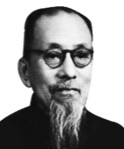
5. Jiang Rongqiao (姜容樵, 1891-1974) was a renowned scholar of martial arts. Jiang Rongqiao was born in 1891 in Cangzhou, Hebei province. Born into a martial arts family his grandfather Jiang Tingju (姜廷举) was a an expert of Yanqing Quan (Mizongquan). He started his studies with his father Jiang defa and uncle Jiang Detai (姜德泰), and then directly with his uncle’s teacher Chen Yushan (陈玉山) , studying Yanqing Quan. Later he studied with Zhang Zhaodong (张兆东), learning Xingyi Quan, Baguazhang and Taijiquan which were to become his focus.
His spirit of breaking the prejudice of schools, combining the strengths of many schools, and being enterprising and hardworking has been praised by the martial arts community. He learned Taishi Whip from Li Linchun, Wudang Sword from Li Jinglin, Qingping Sword from Li Yusan, and Taijiquan from his good friend Tang Shilin. Rong Qiao was quick-witted and had an amazing memory. He studied all day long without getting tired. Every time he learned a move, he would exhaust its principles. In 1920, while working as a staff member in the Jinpu Railway Bureau, he began to teach martial arts. Later, he taught at the Tenth Middle School of Jiangsu Province. In 1928, he founded the Shangwu Jinde Society in Shanghai with private funds from Li Fangchen and Xu Jingren.
In 1932, he was hired as the director of the Editorial Department of the Nanjing Central National Martial Arts Museum and worked for twelve years, editing the “National Martial Arts Series”. In addition to being entrusted by Director Zhang Zhijiang and Deputy Director Li Jinglin to inspect local martial arts halls on behalf of the “Central Guoshu Museum”, preside over martial arts competitions, organize referee selection, and vigorously promote national martial arts, Mr. Zhang also went all out to investigate, study, and organize martial arts in the Central Plains. He has visited Chenjiagou in Wen County, Henan Province, Shaolin Temple in Songshan, Wudang Mountain in Hubei Province, and Puzhou in Shanxi Province, and visited the old and elderly people with well-documented records; consulted family trees, genealogies, and tombstones, and read a large number of local chronicles, county chronicles, and books from past dynasties; and carefully sought the root of the matter.
Li Jinglin once praised him in the “Preface to the Collection of Eight Forms of Xingyi Miscellaneous Chui”: “(Jiang Rongqiao’s martial arts) posture is lively, with a good balance of hardness and softness, without any drawbacks of dullness or extreme hardness. He was regarded as a capable person in the field of traditional Chinese martial arts. He is also good at expounding academic theories.” He became blind through an accident at his later age but continued his great contributions by writing books (among them are 26 martial arts treatises, three martial arts novels, and “Biography of Martial Arts Heroes”.) on all facets of martial arts, many are considered classics in their own right.

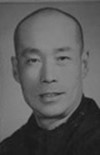
5. Lu Zhenduo (卢振铎, 1903-1981) since the age of 7 studied with Yang Kunshan, mastering Yanqing Quan and Qingping Sword. He was also skilled Acupuncture for Traumatic injuries. In 1922, at only 19 years of age he started the Zhenwei Martial Arts Society (振威武术社) in Shenyang, where he also won the Lei-tai (free fight/combat often resulting in death or severe injury) in 1923. His lethal palms that often knockout opponents, earned him the nickname ”Iron Palm Lu” and “Lightning hands Lu”.
A few years later in 1935 established the society in Shanghai. For a period, he was also a bodyguard for a local warlord Zhang Xueliang. Lu Zhenduo settled in Shanghai and had many students, he was involved throughout his life in the martial arts. After the establishment of the republic of China he taught many students at the Shanghai Sports Stadium, Fuxing Park and was an advisor for many martial arts associations. Lu in addition to Mizong Quan studied/exchanged Taijiquan with Yang Chengfu, Xingyiquan with Chu Guiting, Baguazhang with Jiang Rongqiao. Thereafter, Lu was very innovative and created a number of sets that integrated Yanqing Quan with the popular internal arts at the time (Taiji, Xingyi and Bagua) which remain as classics until this day.
In Shanghai he taught many with his earlier (1950’s) students including Tong Shimu, Chen Ruishu, Lu Rongqin, Cheng Guosheng, Wang Yuezhen, Hou Yuanqing, Hou Genfu, Yu Fengyi, Pan Tonghai and so on. Unfortunately due to the cultural revolution (1966-76) it became more difficult to openly pass on his skills and many of his earlier students disbanded. After the cultural revolution he had even more students such as Song Liankang, Shen weigen, Qianjianmin, Qianruixian, Bao Tieming, Chen Xuanxian, Chen Yijie, Shen Ah Xing, Qiu Zhenjian, Wang Jinzhong, Yong Youcai, Shen Weiyi, Jiang Bing, Wei Zijian, Wei Zikang, Wu Jian, Cheng Rusong, Tang Shenyun, Li Jianzhong, Feng Boming, Wu Chao, Wu Liping, Bei Yijun, Qian Wenjiang, Cao Zhigang. His children eldest son, Lu Junjiang, second son Lu Junhai , daughter Lu Junhua, and adopted son Pu Chongren also inherited his skills, with Lu Junhai (who migrated to UK in 1999) being especially talented.
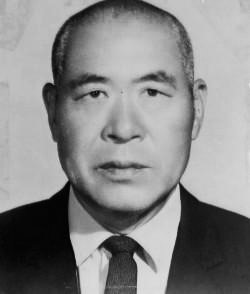
5. Li Yuanzhi (李元智,1902-1972) studied Yanqing Quan with Chen Yushan, and later also Liuhe Quan with Tong Zhongyi (his father in Law). He later studied Bajiquan with Han Huachen, Ma Yingtu and Zhao Shude at the Zhongyang Guoshu Academy in Nanjing. Li published a text on Bajiquan in 1931. In 1932, he became martial arts instructor for the army university and the national guards. In 1938 he served as the deputy director for the Nanjing Guoshu academy. In 1940 he became the instructor for the National Revolutionary Army.
In the 1940’s with the support of his teachers (Han & Ma Bajiquan) he developed Ju Quan and in 1949 he followed the Guomingtang (KMT) to Taiwan. In the 1960’s whilst in Taiwan he continued held posts within the National Army military research and development team, which were responsible for the development and preparation of combat materials for training (his Ju Quan was adopted by the Taiwanese military from 1966-1976). The hand to hand combat, Chi-na grappling and associated skills of the Taiwan armed forces have much to do with Li Yuanzhi’s efforts and legacy. Li was always a very quite, resolute and diligent martial artist focused on true application and scientific considerations. He was not often seen in crowds, enjoying the freedom and tranquility away from public attention. M Li having an education in the most comprehensive systems of Cangzhou, did not entertain empty discussion but focused on the practical cultivating true martial arts talents.
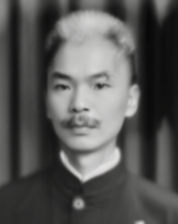
5. Liu Zhenshan (刘振山 1907-1982) was born into a martial family in Cangzhou. He later became a disciple of Yanqing Quan experts Yang Kunshan and Li Lichun, as well as exchanging with others (such as Du Xinwu when Liu was in Chongqing in 1937). He was considered the most senior disciple of Yang Kunshan. Liu became the head of Guoshu academy of the Wan County and taught many students over the course of 15 years.
In 1956 he returned to Cang county where he accepted disciples and passed Yanqing Quan. At a martial competition in those days with practitioners across North China, of the ten champions, five were from Cangzhou and all five were students of Liu Zhenshan. Although he taught many students his most notable disciples included Hu Zhengshun, Qi Fangxian and Hu Changshun.
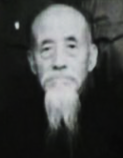
5. Zhao Shoushan (赵寿山 1907~1993) was from Manchurian descent and resided in Cangzhou. Zhao Shoushan served as the deputy director of the Cangzhou Martial Arts Research Office in 1962. He served as the vice chairman of the Cangzhou Martial Arts Association until the establishment of the Cangzhou Martial Arts Association in 1979. Zhao Shoushan practiced martial arts with his grandfather Zhao Mingmao since he was a child. At the age of 18, he became a disciple of Liu Junling and also learned Yanqing boxing. He had profound leg skills, and his leg techniques such as flower-cutting kicks, side kicks, trips, loops, hemp forks, crosses, mandarin ducks, and big flips were superb. Each leg technique had its own basic skills, and he was particularly good at hitting eighteen hooks. Zhao Shoushan was also good at iron sand palm.
Zhao Shoushan was a martial arts coach of the 29th National Army, teaching broadsword and fighting techniques. In 1959, Tianjin held a folk sports competition for 12 counties, and Zhao Shoushan won the first prize for his performances of Taishi Whip and Yanqing Fist. Zhao Shoushan not only had profound martial arts skills, but also was good at bone trauma. He had a deep understanding of sports remedial massage, Tui-na and bone setting. He taught his disciples and practiced medicine, and was highly praised by everyone in the community.
5. Guo Yufen (郭玉芬 1910-1996) started practicing Yanqingquan with his father Guo Zhongsan since the age of 12. His father also permitted his son to study with Yang Kunshan for sometime. Not to disappoint his father Yupen studied diligently and gain commendable skill. In those days, Guo’s Mianzhang Quan was executed with great perfection and his most notable skills in Yanqingquan’s representative weapons such as the Guai (Crutches), Bian (Hard whip), Yuanyang Chan (Moon Knives) and Qingping Sword were all held in great regard. The Double Sabers he learnt from Yang Kunshan were also amazing especially the ground rolling moves which are usually challenging. He continued his fathers legacy and taught in Binzhou, Shandong with many students including his son Guo Baoshen (郭宝申), Zhang Fengyuan (张风员), Chen Anji (陈安记), Sun Zhongcheng (孙忠诚) and many others.
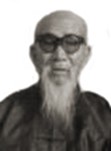
5. Hu Zhenhai (胡振海 1918-1990) born to a martial family (his father was a Taizu Changquan practitioner) he loved martial arts since a young age. He was known as the most knowledgeable and senior dsiciple of M Liu Junling. He was the one of the treasures of Yanqingquan having studied for most of his life. When he was 20 years old he already was renowned in Cangzhou for his formidable skills. Unfortunately, during the various wars and political changes it was not until 1983, that he opened the Mizong Ying Wuguan (Mizong Martial Arts Academy) in Cangzhou which at it’s peak had over 1,100 students, many which came from all over China and abroad (Taiwan, Japan, Australia and Europe).
M Hu was renowned for his Ying Qigong (Hard Qigong) and became known as Iron Head Monk and the Iron Man of Cangzhou (an important nickname given the symbolic Iron Lion of Cangzhou). M Hu’s knowledge of the various unique weapons of Yanqingquan. Whilst open in his teachings, M Hu was a very traditional teacher and ensured to impart the right ethics and principles in addition to the combat skills. M Hu Zhenhai had become the vice-chairman of the Martial arts association and dedicated his last years to the continued development of traditional martial arts.
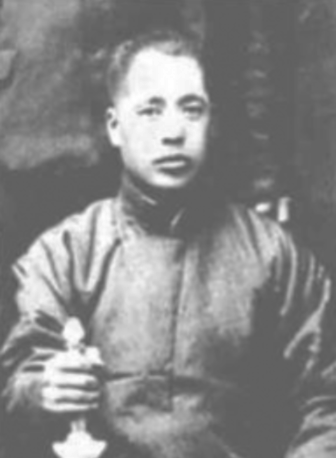
5. Zhao Fengting (赵凤亭, 1906-1963) originally Pingtu county, Shandong Province. At the age of 10, in 1916 he commenced his studies under the tutelage of Sun Yuesheng and was one of his most prominent disciples. In 1930, Zhao accompanied his Master Sun together to Dalian where they established the Mizong Quan Society in 1932. 1943, Mr. Sun Yuesheng was seriously ill, so he appointed Zhao Fengting as the successor to continue the Mizongquan. A well rounded master, Zhao Fengting was well known for his spear and nicknamed ‘Great Spear Zhao’.
Master Zhao had more than a thousand disciples in his life, with numerous talents and famous hands, fruitful achievements and far-reaching influence. After the founding of the People’s Republic of China, three of his outstanding disciples received national honors. In only nine national martial arts competitions from 1953 to 1974, three famous national master-level disciples who won the national championship and runner-up a total of 18 times are: Zhao Ruizhang of the Shandong Province Wushu Team, Yan Guangcai of the Jilin Province Wushu Team, and Liaoning Province Wushu Team. Yu Bujun. They later became famous martial arts professors or senior coaches, senior talents who taught martial arts throughout their lives and vice-chairmen of local martial arts associations. They were all awarded the eighth-dan high-level Chinese martial arts by the country. Some of his notable students included Zhao Ruizhang, Liu Baoyu, Yu Bojun, Zhang Xunde, Wang Peigang, Liu Xisheng, Xu Shouchun, Xu Huatian, Chang Songsheng, Zhang Yunhai, Yan Guangcai and Zhang Baoting.
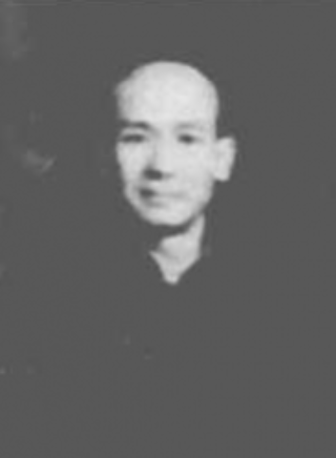
5. Wang Zihua (王子华, 1898-1961), also known as Wang Sheshi (王射石) came from a challenging childhood and left home alone in 1910 (at only 12 years of age) to Yantai, Shandong where he became a worker. In Yantai he encountered Sun Yuesheng’s disciple Li Shushan and became his disciple. He studied with great effort for over 10 years, with sustained diligence he was able to encompass most of Mizongquan system. In 1923, he opened a school to teach students in Yantai. Between 1927-1930 he setup a school and taught Mizongquan in Vladivostok, Primorsky Krai, Russia.
He also taught in Sinuiju, North Korea. In 1930 returning to China he setup schools in Dalian, Qingdao and Dandong (near the Korean border), where he married. In the late thirties he participated in numerous wars/resistance activities including teaching some of the armed forces. After the victory of the Anti-Japanese War in 1945, Master Wang returned to the Northeast and opened a school in Dalian to teach until his death. An official known as Mao asked Wang to come to Dalian to teach. Wang Zihua had a great many students including Yu Xuejian, Zhang Jintang, Shao Jiabin, Jia Deren, Liu Dexi, Hu Yinqing, Qu Shunxu, Gu Yuantao, Zhang Xifu, Zhang Xueqi, Lin Ziyuan, Yu Ruihao, Zhang Baoting, Dai Benshan, Jiang Huanlong, Zhang Jinshan, Xiao Liang, Wang Hui’en, Du Wenqi, Li Bingwen, Han Yilian, Cao Yongyang, Zhang Pengfei and so forth.
5. Zhou Yitang 周玉堂 , Zhou Yuqing 周玉庆, Zhou Yicheng 周玉庆, Zhou Yuzhen 周玉震, Zhou Yuqin 周玉庆
6. Lu Junhai (卢俊海 1941-) Studied Mizongquan with his father from a young age and held various positions in martial arts academies across China. He also contributed to research by writing a manuscript for a book about Qingping Sword during China’s martial arts research project in the 1980s. Many of his fathers students and his own in Shanghai are still guided by Lu Junhai. He currently resides in the UK and leads the Zhenwei Academy there with some excellent students improving their skills day by day.
6. Zhang Jinfa (张锦发) was born in Fenghuadian township, Cang County. M Zhang started practicing Yanqingquan under the tutelage of Huang Qiwen (1907-1981), a disciple of Chen Yushan. When he was 12, M Zhang was also admitted into the sports school of Cang County, where he majored in martial arts and studied under M Guan Fenghua. M Zhang also obtained tutelage from Sub Baye and his descendants on Yanqingquan. After graduation, M Zhang remained as a coach in his county Fenghuadian, where he established the Yanqingquan Boxing Society (燕青拳社) and has been teaching until today.
6. Zhou Fengwu 周凤梧, Zhou Fengchi 周凤池, Zhou Fengjia 周凤甲, Zhou Fengcheng 周凤城, Zhou Fengting 周凤亭, Zhou Feglou 周凤楼 and Zhou Fengjiang 周凤江
7. Zhou Lianjia 周连甲、 Zhou Lianyuan 周连元、Zhou Junshan 周俊山、Lu Bingxun 吕秉逊、Xu Liansheng 徐连升、Zhou Yun’en 周允起、Wang Yuxi 王玉玺、Liu Zimiao 刘滋茂、Yang Fuchen 杨福臣、Yang Jinbang 杨金榜.
Current Lineages of Yanqing Men Mizong Quan
Due to the size and complexity of Yanqingquan (Mizongquan), much of the methods have been lost through time. Chen Style Yanqing Quan was the largest and highly prominent in Cangzhou, however many Masters were lost during the 1900’s through participation in the many conflicts that engulfed China at the time, such as the Sino Japanese War, various warlord rebellions and so forth. Today, the remaining lineages noted below include parts of the overall system. We have spent the last decade to advance our studies of the other styles of Yanqingquan. With the intention to research, develop and preserve as much as possible of the known Yanqing Quan families.
- Cangzhou Yanqing Men (practised by Chen Shan, most senior disciple of Sun Tong and his Chen descendants for generations)
- Cangzhou Zhao Style Yanqing Quan (derived from Chen Shan, named after 5th generation Manchurian M Zhao Shoushan)
- Cangzhou Mizong Quan (derived from Chen Shan, named by the 4th generation Hu Zhenhai)
- Jinghai Tian Style Mizongquan (derived from Tian Yongchun, disciple of Sun Tong)
- Qing County Li Style Mizongquan (Derived from the teachings of Huo Enwu, named after 7th generation Li Yuchuan)
- Qing County Zhao Style Mizongquan (Derived from Lu Tongchui and Zhou Changsheng, passed down in Daxuzhuang village)
- Baoding Nanquantou Mizongquan (derived from teachings of Lu Tongchui & Chen Shan , passed down by Xu Yucong in Gaoyang)
- Huanghua Zhou Style Mizongquan (derived from teachings of Zhou Changsheng, disciple of Sun Tong)
- Huanghua Gao Style Mizongquan (Derived from teachings of Gao Xilin)
- Huanghua Yu Style MIzongquan (derived from the teachings of Yu Shi, disciple of Sun Tong)
- Shanghai Lu Style Mizongquan (derived from Chen Shan, named after 5th generation Lu Zhenduo who taught in Shanghai)
There are also hybrid or derived styles, but these usually just a few sets of Yanqing Men/Mizongquan combined with other material. Examples include Mizong Luohan (by Ye Yuting in Hong Kong) and Yanqing Fanzi Quan (in Shengfang Village, Ba County, Hebei).
Outline of Taiping Yanqingquan
Taiping Yanqingquan is predominantly of the Chen Family Yanqing quan descendant from Grandmasters Sun Baye, Chen Fengkui, Chen Fengqi, Liu Zhenshan, Hu Zhenhai, Huang Qiwen, Zhao Shoushan and Lu Zhenduo. Although iniitally of the Nanquantou line of Yanqingquan, Chen family Yanqingquan dominated focus thereafter. In recent years we have also undertaken studies with other Mizongquan experts including Liang Jincheng, Zhao Hongqing and Gao Enyi in Qing County and Huanghua. As a result Taiping Yanqingquan preserves one of the most comprehensive systems of Yanqing/Mizong Quan. The practice of Yanqingquan is a fairly involved process. It is categorically of the Northern Long fist based range of styles and as a result requires good physical coordination and strength couple with internal development. Most branches of Yanqingquan all have their most representative methods that are often resultant from the training approach. Traditionally students would have to master the basic movements and spend almost three years in the practice of Yanqing Jiazi. In Yanqingquan it is commonly expressed that one should have ” Strength, Guts and Skill”. This means that one first starts with obtaining strength and conditioning, then followed by courage and wisdom of combat and then the skills which are techniques and methods. Yanqingquan emphasizes light and agile techniques. Every movement has its specific requirements, they must be coherent, flexible and natural. Although strength is not used, it is filled everywhere with power. Harmonization of the hard and soft into true power is the higher levels of the skill.
These should be mutually combined and cannot be separated thereafter. Yanqing Jiazi represents the concept that when practicing slow one obtains the Gong/Strength or skill, yet when practicing fast then the techniques and methods are practiced. To ensure that only the worthy are taught there are three not taught rules. Do not teach those who study but do not practice, do not teach those that do not practice with passion and dedication and do not teach those that do not value their ancestors. In fact this also prevents injury because Yanqingquan is a really tough and arduous martial art, so that if you do not practice diligently you would also increase the risk of injury. It takes years of dedicated skill but once achieved the methods of Yanqingquan are amazingly effective indeed.
Nowadays, training is commenced by the practice of footwork to which there are over 50 different or fundamental footwork methods such as Jin, Tui, Tiao, shan, teng, nuo, chen, jing, fa, xu etc……, all essential to the practice of Yanqingquan. Simultaneously many of the basic body motions, hands, arms and kicks are practiced. In terms of Structure practioners would commence by ensuring Xingzheng (Straight Structure), Ti Song (Relaxed Body), Tou Ding (Head upright), Chen Jian (Shoulders Sunken), and more. Yanqing quan has a saying ” Release Hands moving like a wild cyclone, stand as calm as Mount. Tai” which means that although there is a lot of speed the stability and structure must be maintained (i.e. not sloppy).
In terms of Some of the basic strikes these include both hard and soft approaches with such movements as Chong (straight Punch), Beng (Ramming Punch), Pi (Chop), Za (Hammer), Tui (Push), Cha (Pierce) and in kicking methods such as Deng (Side or Press kicks), Tan (Springing kicks), Ti (Taping kicks), and more. Yanqingquan releases hands like cotton, but resembles iron when it makes contact with the opponent. With hand/leg work it is to understand the static gates and the various attacking and defensive actions. With the Body work, it is about angles distance and timing development of which many exercises are conducted with a partner. Stepping methods are then combined with the hands and body into small sequences of drills which are referred to as Lianda or lianshou (interlinked methods). During this time the training of Jiazi (Framwork Form) is ongoing which develops good strength, coordination and technique.
In Yanqing quan it is often expressed “Slowly one trains skills, quickly one trains combat (慢练功,快练攻)” where the ability to undertake slow movements enhances ones precision, effectiveness and speed of attack. Yanqingquan is renowned for integrated the hard and the soft, the fast and the slow.
Mother Fist of Yanqingquan
Yanqing Jiazi is considered the Mother fist of Yanqingquan (Yanqing Quan is also known as Mizong Quan, Mizong Yi and so on). There is an old saying in Yanqingquan ”燕青拳架子功,终生习练不放松 | Yanqing Quan Jiazi Gong, Chong Sheng Xi Lian Bu Fangsong ” which essentially means Yanqing Jiazi should be practiced from birth (start) and never given upon ever. Jiazi means frame or structure. What Jiazi actually focuses is thus the achievement of the alignment, strength and balance whilst simultaneously conditioning the musculoskeletal system. Many of the fundamental techniques of Yanqingquan are also within the Jiazi set/routine. Jiazi is fantastic at opening up the body as the muscles/tendons are stretched, strenghthened and co-ordinated The limbs are fully extended, the stances are low and wide, the kicks are clear and precise. To be able to execute all movements with the calmness yet quickness of Yanqingquan requires a very solid foundation. Jiazi is the epitome of such a foundation.
Practice of Yanqing Jiazi
Throughout the course of development a student endures different levels of hardship in the practice of Jiazi which is undertaken through the variations to its practice.
Ding Jiazi (定架子|Stationary Frame) – The first of practise consists of learning the movements within Jiazi. The breath is maintained stable, the movements are conducted at a natural pace (not too fast and not slow) and positions are held for a single breath. The key is learning the movements properly and ensuring the static structures are understood whilst the dynamic lines are clear.
Man Jiazi (慢架子| Slow Frame) – The Slow frame emphasizes the precision of the path of the technique. Whilst in Ding Jiazi it was a macro view or path, now things become smaller so that it is not just an outside hook as an example but the path must be clearly broken down. The breath here becomes longer and more relaxed, the legs require good strength so as to not obstruct technique. This approach is the main practice method and is also known with variants as Dun Jiazi (蹲架子| Low Frame) or Kao Jiazi (靠架子| Strengthening Frame).
Huo Jiazi (活架子| Rapid Frame) – In Huo (lively) Jiazi, given the completion of the strength and precision of movements, the practitioner now applies the light stepping approach of Yanqingquan. Movements become lighter and agile, fast yet not sloppy, strong but not rigid. At certain intervals the techniques can be paused or held, whilst accelerated in others. By the time of Huo Jiazi, the student has already studied other boxing methods and now their strength, power and stability or enhanced across the realms of all their practices.
After obtaining a grasp of the basics then some of the key theories of Yanqingquan are introduced from both an individual and combat practice perspective. Yanqingquan takes the waist as the central co-ordinator and therefore the waist almost always will be guiding the body and plays a dominant role in the execution of its techniques. Here are also developed the concepts of opposing yin yang hands, passing steps, close adhering. Yanqingquan emphasizes 8 principles, 36 keys and 72 mechanisms of combat as a foundation. The effectiveness of the 36 keys are such that there is a saying that with the mastery of the 36 keys then all can be conquered. As an example something as simple as yin and yang hands becomes methods of playing with the left and right or ups and downs or retreats and entries and even in terms of power applied (soft and hard), and then leads on to passing of an attack to the passing of a defense to the counter and to the indefensible.
So training would evolve into hundreds of techniques or interpretation of single techniques. This seemingly simple complexity becomes the key to Yanqingquan and for each of the keys/principles is extrapolated yet again. In addition to technique based training there is also the development various skills from the famous iron kicks of Yanqingquan to the external conditioning (Ying Gong) methods and the internal cultivation which are acquired through the practice of Jiazi Quan and essential conditioning methods. Yanqingquan develops weapons from the human body that are as lethal as the are deceptive. What must also be developed is the continuity of movement and attack. Yanqingquan does not practice single blow mentality (although it can), rather it it develops coordination amongst the limbs and body, thus movements are interlinked and connected in harmony together.
The Key combat methods are summarized by the 16 word formula of Bao (embrace), Kao(close in), Nian (adhere) , Ao (bend), Ti (lift), juan (roll), Tan (spring), Mu (catch),Na (take), Ling (lead), Tuo (prop up), Jie (intercept), Shuai (throw), Ji (press), Lan (block) and Hua (cross). To develop these in addition to individual and partner practice, there are also many methods with apparatus that are used. Yanqingquan (Mizongquan) is characterized by a lot of training in singular methods and large amount of partner based drills, exercises and combat practices.
Yanqingquan is one of the largest system of martial arts in China, it is very complete with a huge range of different strategies, techniques and combat methods. There are over 50 empty hand forms and each consists of a large number of specialized unique techniques. Each set of practice emphasizes key fighting principles/strategies, they are organized by specific skills and combat strategies that they invoke. Each is actually a universe of methods on to itself, therefore just mastering one there is already great skill to be obtained. Thus some important strategies have many series of practice (such as Lianshou quan, yanqingquan and mizongquan). Yanqing Quan requires substantial stamina as the forms are some of the longest within the martial arts world with the level of speed and intensity required.
Core
| 燕青架子 Yanqing Framework 连手拳 (一至八路) Linked hands (8 Sets) 燕青拳 (一至五路) Yanqing Boxing (5 Sets) 燕青豹拳 Leopard Boxing (2 Sets) 大小进拳 Large/Small Entering Boxing (2 Sets) | 迷踪架 Mizong Frame 迷踪拳 (一至六路) Mizong Boxing (6 Sets) 迷踪艺 Mizong Skill 五虎拳 5 Tigers (2 Sets) 罗汉拳 (一至三路) Luohan Boxing (3 sets) | 溜腿架子 Swinging Legs Framework 绵掌拳 Cotton Palm Boxing 燕青靠 Yanqing Lean 燕青十八勾 18 Hooks 燕青十八翻, 18 Rotations |

Due to interactions with Security Logistics Bureau, Rebellion and armed conflicts, Yanqing Mizong Quan absorbed skills from different martial arts (as an example Yanqing Cha, is from Chahua Men) and also developed composite sets over the course of its evolution, these include the following:
| 燕青唐拳 Tang Boxing 燕青查拳 Cha Boxing 燕青华拳 Hua Boxing 五花炮 5 Cannons 八打拳 8 Strikes Boxing 六家势 6 families styles | 迷踪靠, Mizong Lean 迷踪掌 Mizong Palm 飞虎拳 Flying Tiger Boxing 車前勢 Front of the Carriage postures 埋伏拳 Ambushing fists 武松拳 Wusong Boxing (3 sets) | 劈砸拳 Chopping & Hammering Boxing 呼延拳 Huyan Family Boxing 太祖拳 Great Ancestor Boxing 四门拳 4 Gates Boxing 奔打拳 Running Strikes 梅花拳 Plum Blossom Boxing |
Empty hand Combat Sets
| Zimu Chui (子母捶 Mother & Son fist) Ba Chai (八拆 8 Parts) Ba Da (八打 8 Strikes) Jin Quan (大小进拳 Entering) | Jin Ji Dou (金鸡斗 Golden Roosters challenge) Zhai Kou Zi (择扣子 Open the button) Shiba Gou (十八钩 18 Hooks) Qin Na Shou (擒拿手 Grappling & Locking hands) | Tao Huan San (套环散 Linked & Scattered) Liu Jiu Tou (六九头 Initial Spring) Po Jia (破架 Split frame) Erlong Kao Da (二龙靠打 Two Dragons Closing in Strikes) |
There are a vast number of comprehensive weapons in Yanqing Quan, known both in terms of their techniques but also in their array with unique weapons as well.
Staff
| Qun Yang Gun (群羊棍 Sheperd’s Staff) Xing Zhe Bang (行者棍 Monkkey King’s Staff) Yun Mo Gun (云摩棍 Cloud Rubbing Staff) liuhe Gun (六合棍 Liuhe Staff) | Sanjie Gun (三節棍 Three Sectional Staff) Xiaozi Gun (肖子棍 Two Sectional Staff) Tai Zi Gun (太子棍 Taizi Staff) | Yunmo Dui Gun (雲摩對棍 2 Man Yunmo dual Staff ) Qun Yang Gun (群羊對棍 Sheperd’s dual Staff) Er Lang Dui Gun (二郎對棍 Erlang 2 man Staff) |
Saber
| Xiao Hua Dao (小花刀 Small Flower Saber) Simen Dao (四门刀 4 Doors Saber) Meihua Dao (梅花刀 Plum Blossom Saber) Linglong Dao (玲珑刀 Exquisite Saber) | Lianhuan Dao (連環刀 Continuous Saber) Liuhe Dao (六合刀 6 Harmonies Saber) Wolong Dao (卧龙刀 Dragon Saber) Sanshou Dao (散手刀) | Pigua Dao (劈挂刀 Chopping & Hanging Saber) Miao Dao (苗刀 Grain Leaf Saber) Yan Qing Shuang Dao (燕青双刀 (一至六路) Double S |
Spear
| Jiu Qiang (四門九枪 9 Spear) Zhangfei Spear (张飞枪 Zhangfei Spear) Zilong Spear (子龙枪 Zilong Spear) Ba Gua Qi Men Qiang (八卦奇门枪 Mysterious Spear) | Yang Jia Qiang (杨家梨花枪 Yang Family Spear) Luo Jia Qiang (罗家断门枪 Luo Family Spear) Wu Hu Qunyang Qiang (五虎群羊枪 5 Tigers catch lamb Spear ) | Shuang Tou Qiang (双头蛇枪 Double headed Spear) Shuang Qiang ( 双枪 Double Short Spears) Liuhe Da Qiang (六合大枪 Six Harmonies Long Spear) |
Sword
| Qing Long Jian (青龙剑 Green Dragon Sword) Kun Wu Jian (昆吾剑 Kunwu Sword) Ba Gua Jian (八卦剑 Bagua Sword) Taiji 13 Jian (太极十三剑 Taiji 13 Sword) | Luzu Sword 吕祖剑 Ancestor Lu Sword Zhongkui Sword 钟馗剑 Zhongkui Sword Fengwei Sword (凤尾剑 Phoenix Tail Sword) Jia Style Qing Ping Jian (贾氏青萍剑 (一至六路) Qingping Sword) | Fo Chen Jian (佛尘剑 (一至三路) Whisk and Sword) Meihua Shuang Jian (梅花双剑 Plum Blossom Double Swords) Da Mo Shuang Jian (達摩双剑 Da Mo Double Swords) |
Hard Whip
| Huwei Bian (太师鞭 – 虎尾鞭 Tiger Tail Hard Whip) Shuimo Bian (太师鞭 – 水磨鞭 Water Mill Whip) Taishi Dual Bian (太师鞭 – 对击 Taishi Dual Set Whip) | Zhujie Gang Bian (竹节钢鞭 Bamboo sectioned Hard Whip) Huyan Shuang Bian (呼延双鞭 Double Iron Whip) |
| Hook Swords Hutou Shuang Gou ( 虎头双钩 Tiger’s Head Hook Swords) Longxing Shuang Gou (龙行双钩 Moving Dragon Hook Swords) Hushou Shuang Gou (护手双钩 Protect the hand Hook Swords) Meihua Shuang Gou (梅花双钩 Plum blossom Hook Swords) Bagua Jianjinjiao Gou (八卦剪金较钩 Bagua Slicing Hook Swords) | Axes Xuanfeng Shuang Fu (旋风双斧 Whirlwind Axes) Xuanhua Shuang Fu (宣化双斧 Declaration Axes) Jinque Shuang Fu (金雀双斧 Golden Bird Axes) Kai Shan Fu (开山斧, Long handled Axe) |
Others
| Qing Long Da Dao (青龙偃月大刀 Long Handled Knife) Shuang Bi Shou (龍鳳雙匕首 Double Daggers) Kua Hu Shuang Lian (跨虎双镰 double Sickles) Chenxiang Guai (陈香拐 Walking stick ) Sun Bin Guai (孙膑拐 Crutch) Hunyuan Shuang Chui (混元双捶 Primordial Hammers) Xuanba Shuang Chui (玄霸双捶 Dark Tyrant Hammers) Lianzi Shuang Chui (链子双锤 Chained Hammers) Shuang jian (双锏 Double Rods) Tiangang Da Yan Dai (天罡大煙袋 Long Smoking Pipe) Dao jia bian (刀加鞭 saber and chain) Shuang Ji (双戟 double halnberds) Emei Ci (峨嵋刺 Emei Piercers) | Yueya Chan (月牙铲 Moon and Shovel) fangbian Chan (方便铲 Shovel/Monk’s Spade) Fo Chen (佛尘 Whisk) Jiujie Bian (九节鞭 9 section chain) Dao Jia Guai ( 刀加拐 Saber with Baton) Gou Qiang Guai (勾枪拐 Hooking spear Crutch) Tulong Shuang Guai (土龙雙拐 Earthly Dragon Double Crutches) Pu Dao (朴刀 Long handled Chopper Knife) Zimu Yuanyang Yue (子母鸳鸯钺 Mother son Mandarin duck knives) Ziwu Yuanyang Yue (子午鸳鸯钺 Ziwu Mandarin duck Knives) Shierlian Ji (十二连戟 12 Interlinked Halberd) Da Tang (大镗 Long Handled Halberd) Jingang Quan 金钢圈 (Golden Rings) |
| 双头蛇进枪 Twin Headed spear vs spear 单刀进枪 saber vs spear 双刀进枪 double saber vs spear 朴刀进枪 long handled saber vs spear 三节棍进枪 3 section staff vs spear 棍进枪 staff vs spear 群羊对枪 Dual spear | 空手夺单刀 Empty hand vs saber 空手夺双刀 Empty hand vs double saber 空手夺匕首 Empty hand vs Daggers 对劈刀 Saber vs Saber 对刺三合剑 San He Sword vs Sword 对刺三才剑 San Cai Sword vs Sword 对刺真武剑 Zhenwu sword vs sword |
